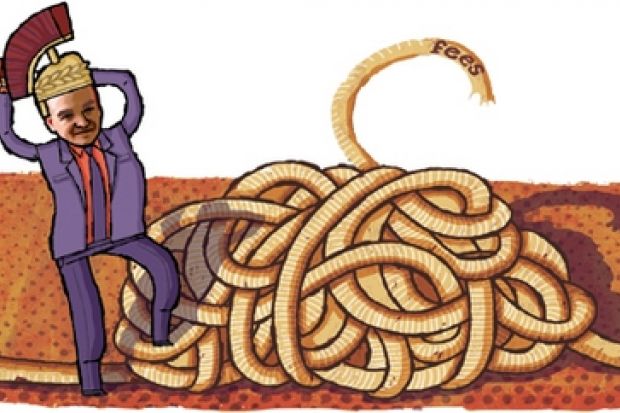The new higher education funding regime seems to be spinning out of the government's control as universities plan to set tuition fees at a higher level than the coalition expected. Higher fees mean more unpaid loans, leading to higher public expenditure, meaning more cuts to come. An unpopular policy will become even more unpopular.
David Willetts, the universities and science minister, knows how to stop "silly" fees - use competition to keep prices down. But total student numbers need to be controlled to limit public expenditure. So how can you control overall student numbers while also allowing competition between universities? Here is one proposal: allow unbridled competition for students with formal entry qualifications, but limit the number of those without them.
In his speech to the Universities UK spring conference last month, Willetts talked about competition from "alternative providers", that is, private institutions and further education colleges. However, their pre-higher education courses for overseas students are under severe threat from the government's immigration policy. Theresa May, the home secretary, is chopping the legs off the institutions that Willetts wants to compete against the universities. Competition from "alternative providers" is not going to do the trick.
Real competition among established universities is what's needed, through the abolition of the cap on student numbers in individual institutions. Universities would be much more cautious in setting fees if their competitors were able to increase their student numbers; there is no point having high fees for empty places. Willetts identified this as an issue that his forthcoming White Paper will raise for discussion, but he should not wait that long. The rules of the funding game need to be clear before universities make their decisions about fees for 2012.
The Browne Review showed how the government could control total undergraduate numbers, and therefore public expenditure, while allowing individual universities to compete. Potential students would need academic qualifications expressed in Universities and Colleges Admissions Service tariff points in order to gain automatic access to the student loan system.
Of course, the system also needs to deal with students who are admitted to university without formal academic qualifications, people admirably given a second chance to enter higher education. A recent report from the Higher Education Policy Institute reveals that of the 360,208 English-domiciled students admitted to higher education institutions in England in 2010, an astonishing 126,326 - 35 per cent of the total - had no Ucas points, and a further substantial number had fewer than 120 points (three E grades at A level).
Students who enter the system without formal qualifications, often as mature students, are much less likely to repay their loans. Did the government really intend to focus most of the public subsidy for higher education on the 125,000 or so students without formal entry qualifications? Are we happy that more than half of the domestic undergraduates admitted by many UK universities lack these qualifications? Competition should rule the main marketplace, but this part of the system needs regulation.
Willetts should adopt the following rules:
• Universities should be free to accept as many students as they want who have 120 Ucas points or more. There would be full market competition for these students.
• Institutions would bid to the Higher Education Funding Council for England to secure student places for those with fewer than 120 Ucas points. The total number of these places should be controlled.
• For each institution, Hefce would set a limit to the proportion of unqualified students, with a maximum of, say, 50 per cent. Universities therefore could recruit unqualified applicants only if they were successful in attracting qualified students.
• Because unqualified students incur higher public expenditure costs, universities would not be allowed to charge them annual tuition fees in excess of £6,000. Those permitted to accept a proportion of unqualified students in excess of 25 per cent could have their fees for all home undergraduates capped at £6,000 or less.
These rules would allow the government to control overall student numbers, and also to regulate both fees and numbers where public expenditure costs are highest; real competition would restrain fees in the free market.
Above all, if successful universities and departments could expand, the system would become more responsive to student needs. Rewarding good departments with more students and more faculty is the way to make sure that excellent teaching is given as much priority as research.
Register to continue
Why register?
- Registration is free and only takes a moment
- Once registered, you can read 3 articles a month
- Sign up for our newsletter
Subscribe
Or subscribe for unlimited access to:
- Unlimited access to news, views, insights & reviews
- Digital editions
- Digital access to THE’s university and college rankings analysis
Already registered or a current subscriber?
